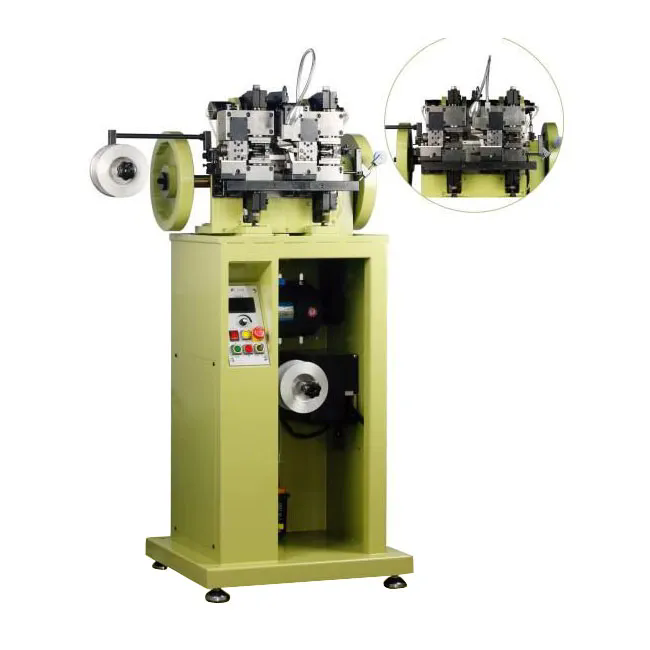The Evolution of Efficiency: A Comprehensive Guide to Ball Chain Making Machines
2024-08-19
In the manufacturing world, precision and efficiency are key factors in producing high-quality products. One area where these factors play a crucial role is in the production of ball chains. Ball chains, widely used in applications ranging from keychains to industrial machinery, require specialized machinery to ensure their quality and consistency. Enter the ball chain making machine—a vital tool in modern manufacturing. In this blog, we’ll explore what ball chain making machines are, how they work, their benefits, and their role in the industry.
What is a Ball Chain Making Machine?
A ball chain making machine is a specialized piece of equipment designed to produce ball chains through a series of automated processes. Ball chains are composed of small, spherical metal balls linked together by connectors, creating a flexible and durable chain. These chains are commonly used in applications such as keychains, curtain chains, and decorative items.
The ball chain making machine automates the entire production process, including the formation of metal balls, the insertion of connectors, and the assembly of the final chain product. This automation not only enhances efficiency but also ensures a high level of precision and consistency in the finished product.
How Ball Chain Making Machines Work
The operation of a ball chain making machine involves several key steps:
1. Metal Ball Formation: The machine begins by forming small metal balls from raw materials. This process typically involves shaping and molding metal wire or pellets into spherical forms.
2. Connector Insertion: Once the metal balls are formed, connectors are inserted between them. These connectors, which can be in the form of small metal rings or links, join the balls together to create the chain.
3. Chain Assembly: The machine then assembles the balls and connectors into a continuous chain. This process may involve feeding the components into a chain-forming mechanism that ensures proper alignment and spacing.
4. Quality Control: Throughout the production process, the machine performs quality control checks to ensure that the chains meet specified standards. This may include verifying the consistency of ball size, connector placement, and overall chain integrity.
5. Cutting and Finishing: Finally, the machine cuts the completed chain to the desired length and performs any finishing operations, such as polishing or coating, to enhance the appearance and durability of the chain.
Benefits of Ball Chain Making Machines
1. Increased Efficiency: Ball chain making machines significantly increase production efficiency by automating the entire process. This reduces the need for manual labor and speeds up the production cycle, allowing manufacturers to meet high demand.
2. Consistent Quality: Automation ensures that each ball chain is produced with consistent quality and precision. This uniformity is essential for applications where reliability and performance are critical.
3. Cost-Effectiveness: By reducing labor costs and minimizing material waste, ball chain making machines offer a cost-effective solution for large-scale production. The initial investment in the machine can be offset by long-term savings and increased output.
4. Versatility: Modern ball chain making machines are designed to handle a variety of chain sizes and styles. This versatility allows manufacturers to produce different types of ball chains to meet diverse market needs.
5. Reduced Waste: The precision of ball chain making machines minimizes material waste, as the machine is designed to optimize the use of raw materials and produce minimal scrap.
Applications of Ball Chains
Ball chains have a wide range of applications, including:
1. Keychains: Ball chains are commonly used in keychain assemblies, offering a flexible and durable option for attaching keys and accessories.
2. Curtain Chains: Decorative curtain chains made from ball chains are used in home interiors to add an elegant touch and facilitate smooth curtain movement.
3. Industrial Uses: Ball chains are also employed in various industrial applications, such as conveyor systems and machinery, where their durability and flexibility are advantageous.
4. Decorative Items: Ball chains are used in a variety of decorative items, including jewelry and crafts, where their aesthetic appeal and functionality come into play.
Future Trends in Ball Chain Making Machines
As technology advances, ball chain making machines are evolving to incorporate new features and capabilities:
1. Smart Technology: Integration with smart technology and IoT (Internet of Things) allows for real-time monitoring and data collection, enabling predictive maintenance and improved efficiency.
2. Energy Efficiency: Modern machines are designed to be more energy-efficient, reducing operational costs and environmental impact.
3. Customization: Advances in machine technology are making it easier to customize ball chains to meet specific requirements, including varying ball sizes, connector types, and chain lengths.
4. Automation Integration: Future machines will likely integrate more advanced automation systems, further enhancing production speed and accuracy.
Conclusion
Ball chain making machines are a crucial component of modern manufacturing, providing the efficiency and precision needed to produce high-quality ball chains for a variety of applications. By understanding how these machines work and their benefits, manufacturers can make informed decisions about investing in this essential technology. As advancements continue to shape the industry, ball chain making machines will remain at the forefront of innovation, driving productivity and quality in the production of these versatile and valuable products.



